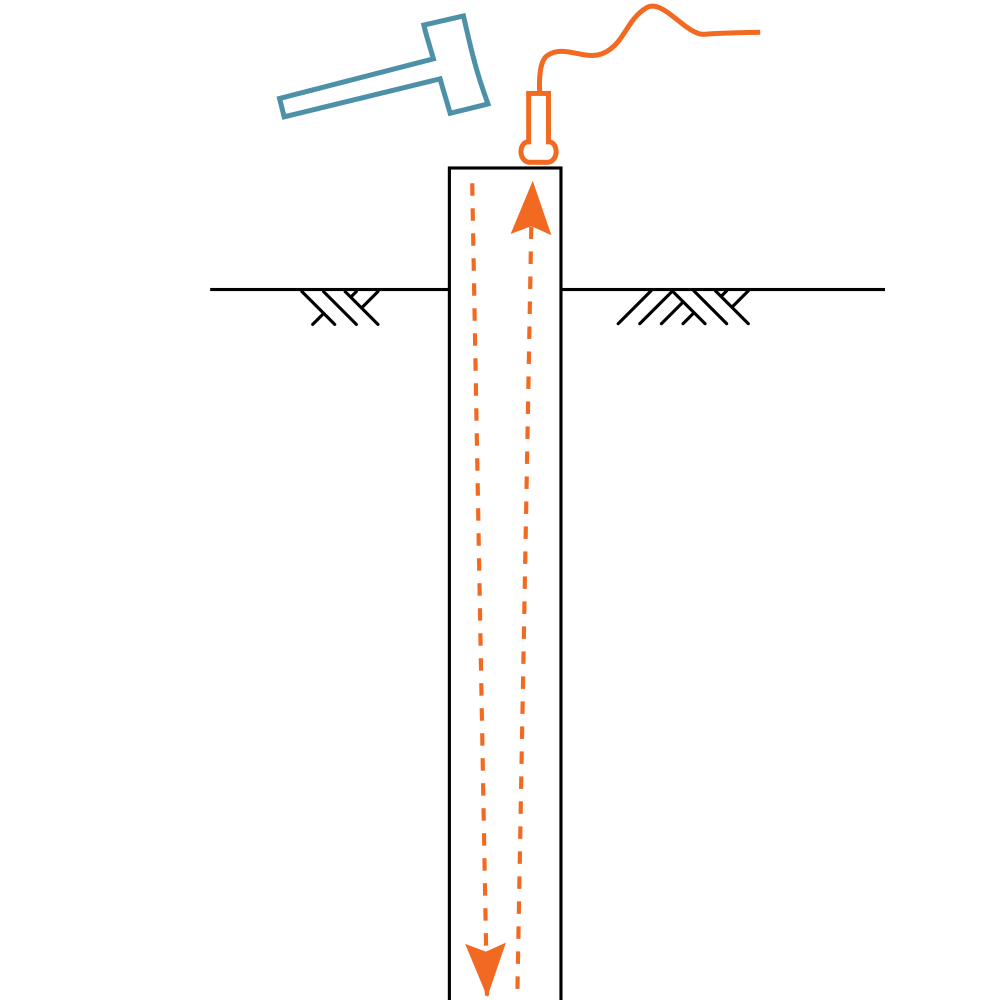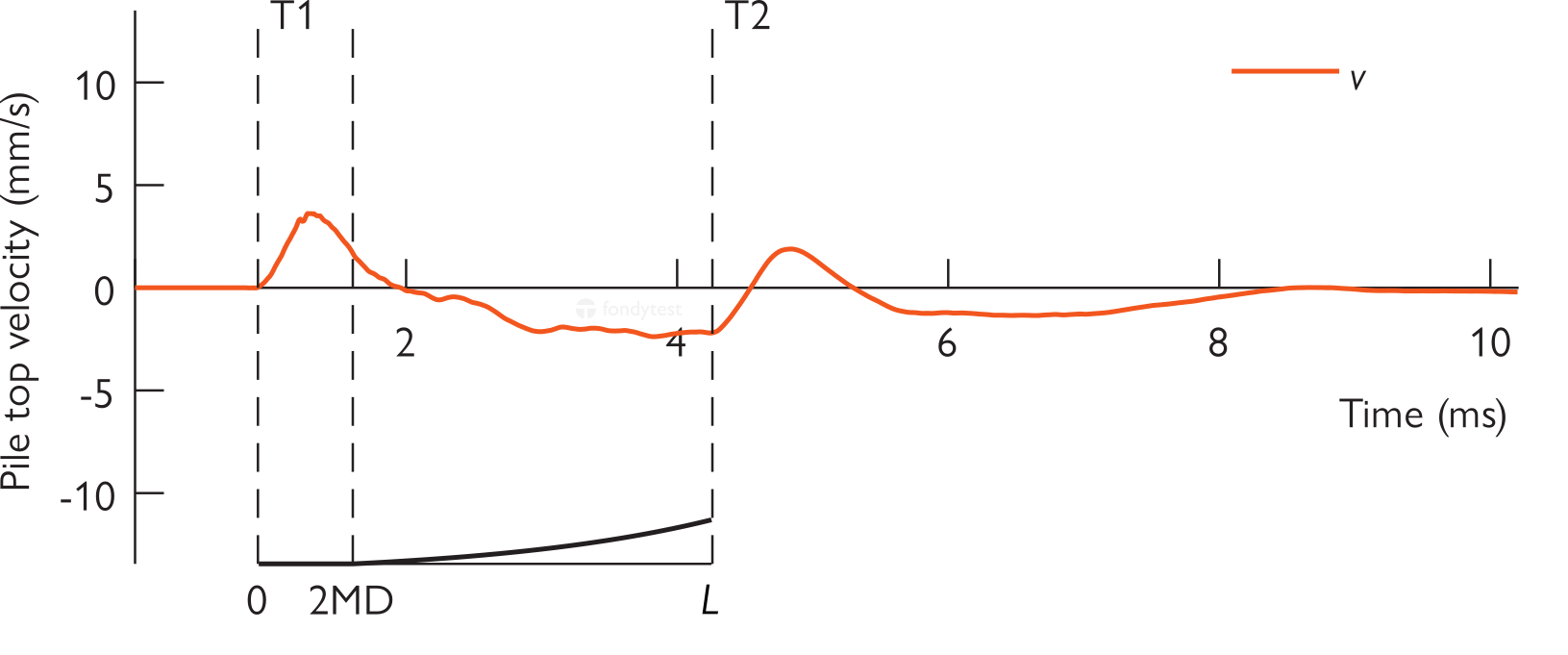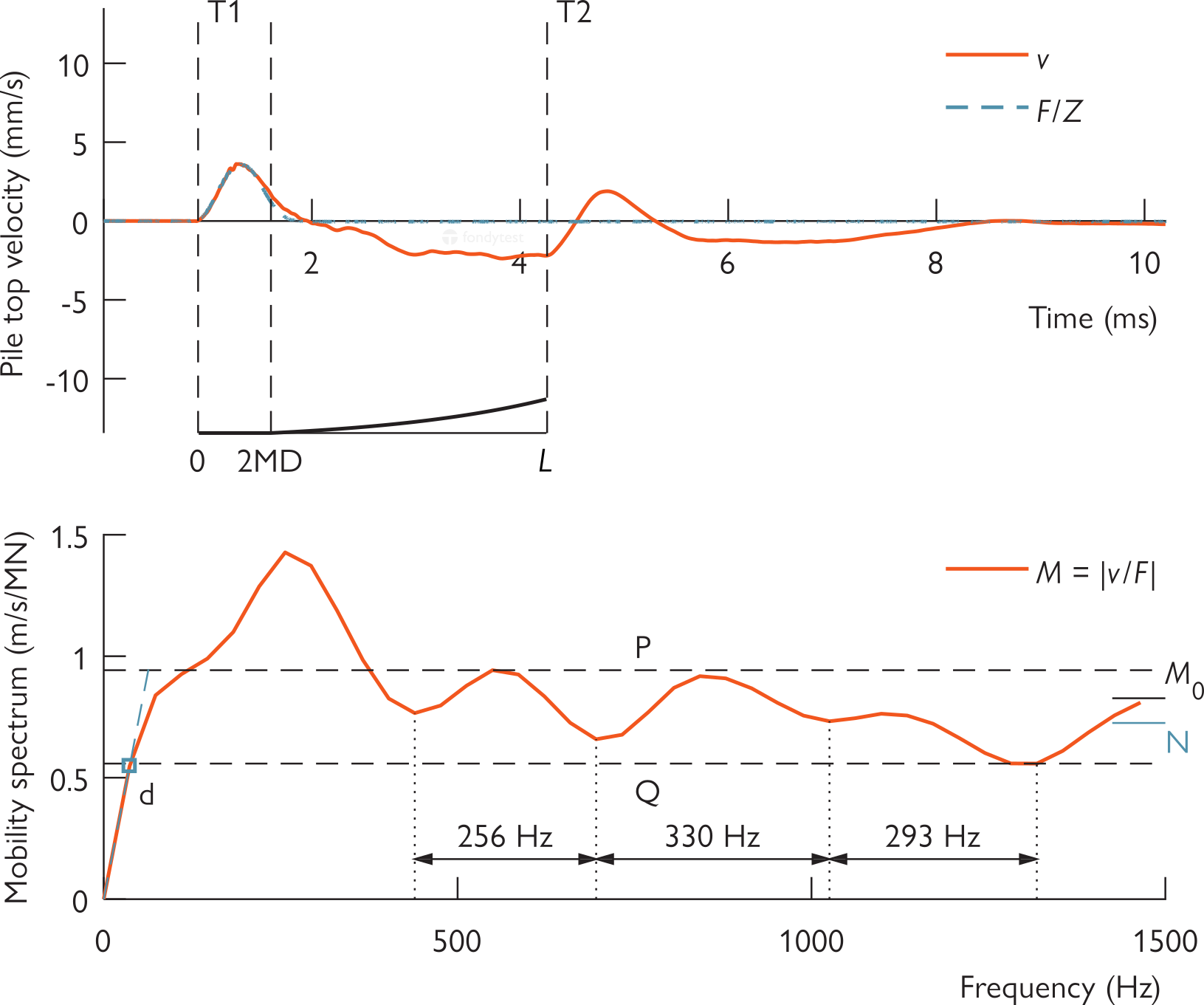Pile low strain integrity testing
A low strain integrity pile test is a rudimentary test performed with a hand-held hammer and a pile sensor. Such a test can:
- Reveal potential pile defects such as cracks, voids, necking, or soil inclusions;
- Determine unknown pile lengths.
We perform two types of low strain integrity tests: the sonic-echo test and the impulse response test. These are described below.


Sonic-echo test
The sonic-echo test is performed by striking the pile head with a hand-held hammer while recording the pile head velocity (v) thanks to a sensor attached to the pile head.
The hammer blow creates a shock wave which travels through the pile. The signal is recorded and analysed using the principles of one-dimensional wave mechanics in elastic rods.
The sonic-echo test is also named the pulse-echo test, the integrity test, the SIT test, the TNO test, or the PIT test.

Impulse response test
The impulse response test follows the same principles as the sonic-echo test, with the addition that the hammer force (F) is recorded.
The additional force measurement allows to assess the pile head cross-sectional area, and to inspect the frequency domain of the signal.
The impulse response test is sometimes called the transient response test, the sonic mobility method, the impedance test, or the MIMP for méthode impulsionnelle.
A low strain integrity test can:
-
Assess the pile length
Although this depends on ground conditions, the pile length typically can be assessed up to a L/D ratio of 30, where L and D are the pile length and diameter, respectively.
-
Detect a potential anomaly in the pile concrete
A low strain integrity test can detect cracks, voids, neckings, bulbs, or soil inclusions. The minimum detection resolution is estimated to be 20% change in pile characteristics (concrete quality and/or cross-section) over a length of 0.8 m.
-
Assess the pile head cross-sectional area (impulse response test only)
By comparing the force and velocity signals in the time domain, we can measure the pile head cross-sectional area.
The test main limitations are:
-
The test cannot assess pile capacity
A low strain integrity test cannot evaluate the load-settlement characteristics of a pile. Only a pile load test, such as the pile dynamic load test, can.
-
The test effectiveness is reduced for higher L/D ratios
Although this depends on ground conditions, the signal is representative of the pile up to a L/D ratio of 30, where L and D are the pile length and diameter, respectivelly.
-
The test cannot evaluate the pile under a crack
If a crack is detected at a certain depth, the wave is blocked and the test cannot assess the pile concrete quality below the crack.
For questions, remarks, or a quotation, please do get in touch with us.
We perform the sonic-echo test following the NF P 94-160-2 standards and the impulse response test following the NF P 94-160-4 standard. Both tests also comply with the U.S. ASTM D5882 norm. Furthermore, our tests follow the Dutch CUR 109:2013 recommendations and the U.K. ICE Specification for Piling and Embedded Retaining Walls (3rd edition, chapters B15-C15).
We are based in Belgium and also available in the neighbouring countries: the Netherlands, Luxembourg, and France.